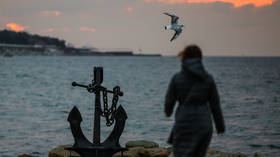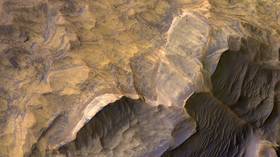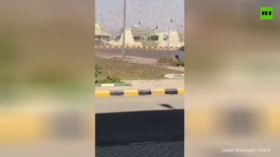Russia’s FSB security agency says no-fly zone over manor Navalny claims is ‘Putin’s Palace’ is due to threat of NATO spy planes

A ban on air traffic in the skies near the Black Sea resort of Gelendzhik was, for opposition figure Alexey Navalny, evidence that the owner of a palatial manor on its shores was none other than Russian President Vladimir Putin.
However, on Wednesday, the country’s top state security agency, the FSB, moved to shut down speculation that the no-fly zone was in place to protect a reclusive VIP. Instead, officers told the RBC news network it had been put in place last summer in response to the threat of spy planes.
According to a Ministry of Transport directive, cited by the FSB, the rationale for banning flight paths over the southern coast was “increased intelligence activity of a number of neighboring states, including those belonging to the NATO bloc.”
Also on rt.com ‘It would be improper’: Kremlin refuses to name owner of ‘Putin’s Palace’ after Russian president denies it belongs to himIn response to questions about the presence of an FSB outpost in the region, the service added that it was simply involved in “protecting a section of Russia’s border, ensuring economic and other interests of the country, monitoring the protection of water and biological resources and observing border controls.” The agency added that there were “no protected properties” in the area.
However, some commentators were quick to point out that the disputed land border with Crimea is nearly 250km away. That said, the coastal border, opening onto the Black Sea, which has been a hotspot for military tensions with NATO members, is far closer.
Others pointed to Western media reports dating back to 2019, before the no-fly zone was supposed to have come into effect, in which it was claimed that anti-aircraft activities were taking place in the area. ‘Spoofing’ of GPS signals to confuse drones and approaching jets was said to have been frequently detected around Gelendzhik.
The existence of a no-fly zone on the sunny south coast was used as evidence in a documentary published by Navalny and his supporters to claim that a vast estate there was Putin’s secret home. In digital mock-ups, the Photoshopped president could be seen swimming in a crystal-clear pool, while guests apparently have access to a casino, a hookah bar, and a lounge complete with a stripper pole.
The Kremlin has categorically rejected the claims as false. “Nothing which is said in Navalny’s film to be my property belongs to me or my close relatives, and never did,” Putin said in a conference call on Monday. His spokesman, Dmitry Peskov, added that “the owners are entrepreneurs,” but that it would be improper for the names of private residents to be disclosed by officials.
Like this story? Share it with a friend!















